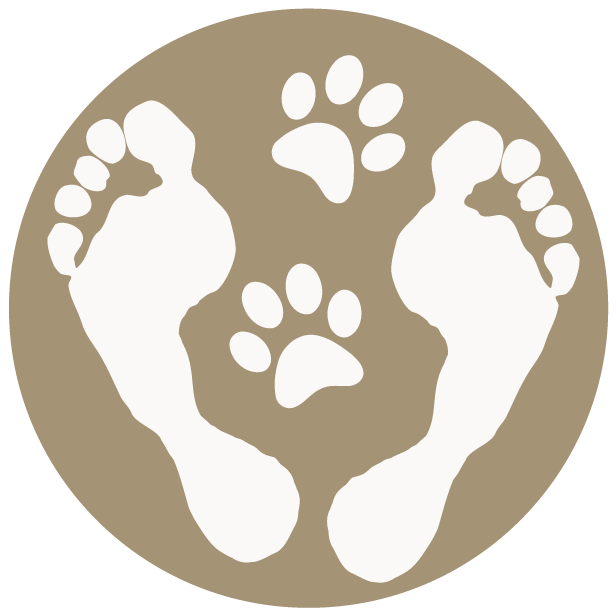Redefining “socialization”
"Socialization" is one of those terms that needs redefining (along with "punishment", "discipline", "love", and "happy") when it comes to dogs.
There's a common mindset that a "social" dog means a "playful" dog. "I want my dog to be able to play with other dogs", "my dog has to play", etc. Because of this mindset, dogs are often put in situations and scenarios they're uncomfortable with and haven't been equipped to handle. This diminishes trust and respect in us, damaging the relationship- which sets the stage for a host of other problems.
We live in a very far-from-instinctual world, as dogs now do. Way back when, dogs were .... dogs. They lived, ate, and behaved as dogs do. They had more freedom to meet their own needs and were exposed to various people, places, animals, and overall conditions. Dogs these days typically live very sheltered lives and are far more reliant upon us to meet their needs. Sadly, due to lack of knowledge, understanding, or even time/energy, we're falling way short of doing so- resulting in anxious, bored, frustrated, stressed out, reactive, insecure, imbalanced dogs.
As with human children, there are critical, developmental windows in a young dog's life to help them connect certain dots, develop certain associations (as well as their emotional and mental health), and simply acclimate.
A simplified general rule of developmental thumb is (this is where we are shaping and contributing to a dog's self- and world-concepts):
0–7 Weeks
Interacting with the mother and siblings, and learning bite inhibition, appropriate social solicitation and cueing,
and so on.
7–8 Weeks (ideally 8 weeks)
Pups in this stage are mentally mature enough to adjust to changes, so it's the ideal time for going home and bonding with people- as well as learning basic in-home manners.
8–10 Weeks
A.k.a. "the fear period". Puppies are very impressionable during this stage. *Positive exposure* to various objects, people of all ages (always advocating for the puppy around children and teaching them how to handle and behave around the young pup), other animals, and situations and scenarios is key here.
8–16 Weeks
Great stage to begin teaching basic obedience and enroll in puppy training classes.
4–6 Months
Known as the pre-adolescent period where there's a gradual increase of curiosity, confidence, and independence. Best to continue training, exposure, and "together time" to really solidify and strengthen the bond.
6–12 Months
The need for stimulation and engagement is high, and their sex drive is building as they "become of age". *Do not spay or neuter before the reproductive system is completely and fully developed! The body operates as an eco-system, everything is interconnected, and much-needed hormones are being produced and generated during this time. Removing / tinkering around with things prior to the completion of this process significantly increases the probability of health and behavioral issues down the line.* Avoid off-leash situations where their drive can supercede relationship and any obedience training. Much like teenagers "coming of age", we can expect hairy and "different" behaviors during this time.
12–18 Months
Around this time, emotional maturity is peaking and certain character traits will start to reveal themselves. As with "parenting" human children and teenagers, our approach and manner must shift along with the personalities, choices, and behaviors we're being presented with.
"Socialization" to us simply means "exposure" and "sharing space respectfully" (i.e. sharing space without being a jerk-off).
This also means we must get to know our dogs as the individuals they are, so we can best advocate for them and also choose the situations and scenarios we bring them into wisely. Is our dog a bit more "introverted"? Shy? Sensitive? Insecure? Easily overwhelmed? More self-certain? Overly-assertive? We don't want to insert our dogs in certain situations where they're ill-equipped to handle or too uncomfortable to deal with it. Doing so sets them up for a negative experience, which can be challenging to re-write.
Note: this does not mean *shelter our dogs from uncomfortable situations" or *completely avoid uncomfortable situations*. When we do this, we rob them of valuable learning experiences, as well as how to develop healthy coping habits. Slow, methodical, and strategic exposure under the direction and tutelage of a grounded (read: *non-emotional*), confident, calm, fearless guidance-counselor (... pssst...that's us : )) is key.
At the end of the day, we can do our best to set our dogs up and equip them with a solid understanding of the world around them (e.g. what's appropriate vs. inappropriate), but we also have to remember that, like humans, dogs will have their caps and limitations given what they genetically bring to the table.... as well as what they missed out on in their earlier, more impressionable stages of life. Most dogs didn't have these critical points invested in. They weren't properly equipped (mentally and emotionally) and educated. And this is okay. Getting to know our dog, and honoring and respecting who they are as an individual... setting them up for success... confidently way-showing and advocating....strategically teaching and equipping... is always a great combo.
Redefining socialization is necessary ... the more we know, the better we can do

